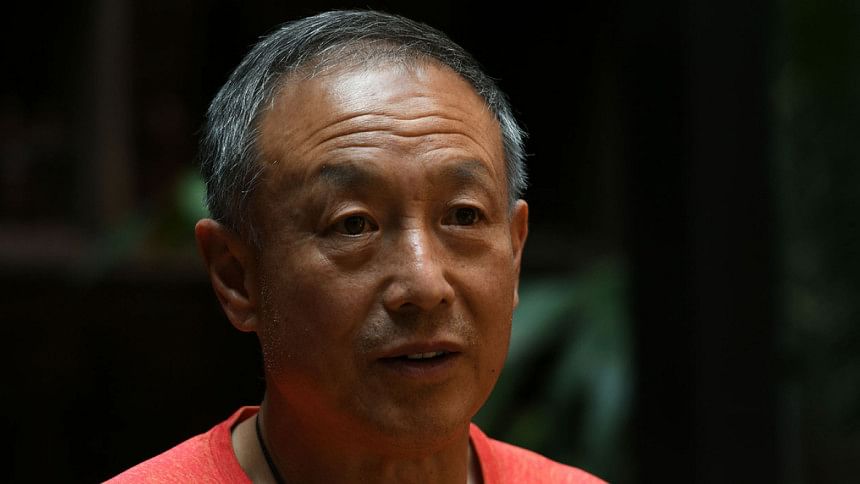Double amputee sets record in Everest summit

Everest's summit season got off to a frantic start Monday with at least 30 climbers reaching the peak, including a Chinese double amputee and an Australian who set a new world record.
Xia Boyu, a 69-year-old hit by frostbite on Everest over four decades ago, and Steve Plain, who was nearly paralysed by an accident four years ago, were among the first to summit the world's highest mountain.
Plain also set a new world record with his ascent, becoming the fastest climber to summit each of the highest peaks on Earth's seven continents.
The Australian conquered Everest 117 days after standing atop Mount Vinson in Antarctica, breaking the previous seven summit speed record by nine days.
Xia's summit is also notable, coming just months after Nepal's government tried to ban double amputees and blind climbers from scaling its peaks.
The ruling was struck down by Nepal's top court in March, which ruled it discriminatory towards people with disabilities.
Xi lost both feet to frostbite on his first attempt to climb Everest in 1975. In 1996 his legs were amputated just below the knee after he was diagnosed with lymphoma.
"Climbing Mount Everest is my dream. I have to realise it. It also represents a personal challenge, a challenge of fate," Xia told AFP last month before heading to the mountain.
A team of sherpa climbers fixed the ropes to the summit from Everest's southern side in Nepal on Sunday, opening the route for hundreds of paying climbers.
Meanwhile a team which deployed to fix ropes from Everest's north in Tibet reached the summit on Monday, said the Himalayan Database which monitors climbers.
This year hundreds are expected to make it to Everest's summit, 65 years after New Zealander Edmund Hillary and sherpa Tenzing Norgay became the first to reach the top of the world.
Nepal has issued 346 permits to mountaineers for this year's spring climbing season, which runs from mid-April to the end of May.
Most Everest hopefuls are escorted by a Nepali guide, meaning about 700 climbers will tread the same path to the top of the 8,848 metre (29,030 foot) peak in the coming weeks.
Another 180 climbers are preparing to summit Everest from its north side in Tibet, according to the China Tibet Mountaineering Association.
Everest has become a lucrative business, with foreigners paying $11,000 for a permit to summit. But cut-price climbing outfits skimping on basic safety requirements have flourished in recent years, luring amateurs to the challenge.
The rapid growth in the climbing industry has sparked complaints of overcrowding on the mountain and fears that inexperienced mountaineers could run into trouble.
Climbers try to minimise the time they spend in the aptly named "Death Zone" -- an area above 8,000 metres on Everest where there is less than a third of the oxygen found at sea level.
At that altitude traffic jams can be deadly as the low oxygen environment leds to hypoxia -- acute oxygen deprivation that leaves climbers vulnerable to frostbite, deadly swelling of the brain and fluid build-up in the lungs.
Plain, the Australian climber, complained of long queues on the way to the summit.
"When people realise they are causing a traffic jam, you'd like they'd have the courtesy to find a staff spot to step aside and let others pass. But no... (I'm looking at you Mr Blue Helmet)," the new world record holder wrote in a blog post Sunday.

 For all latest news, follow The Daily Star's Google News channel.
For all latest news, follow The Daily Star's Google News channel. 






Comments